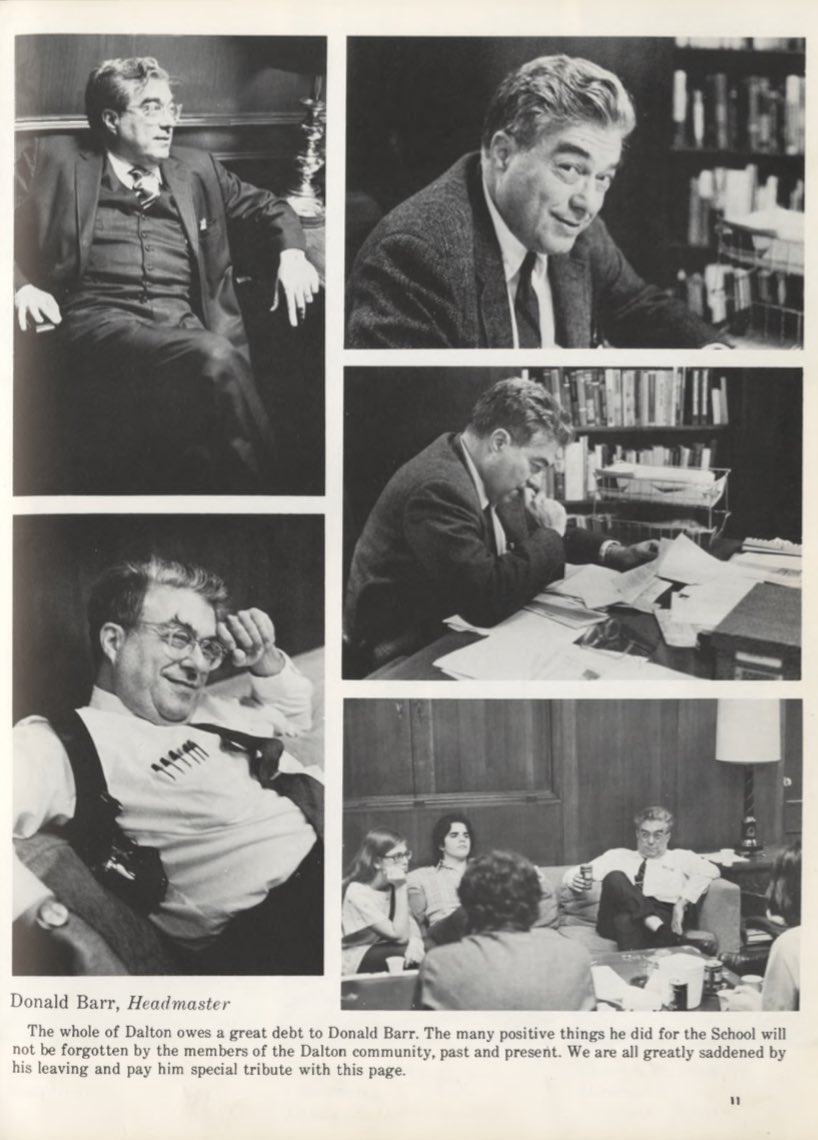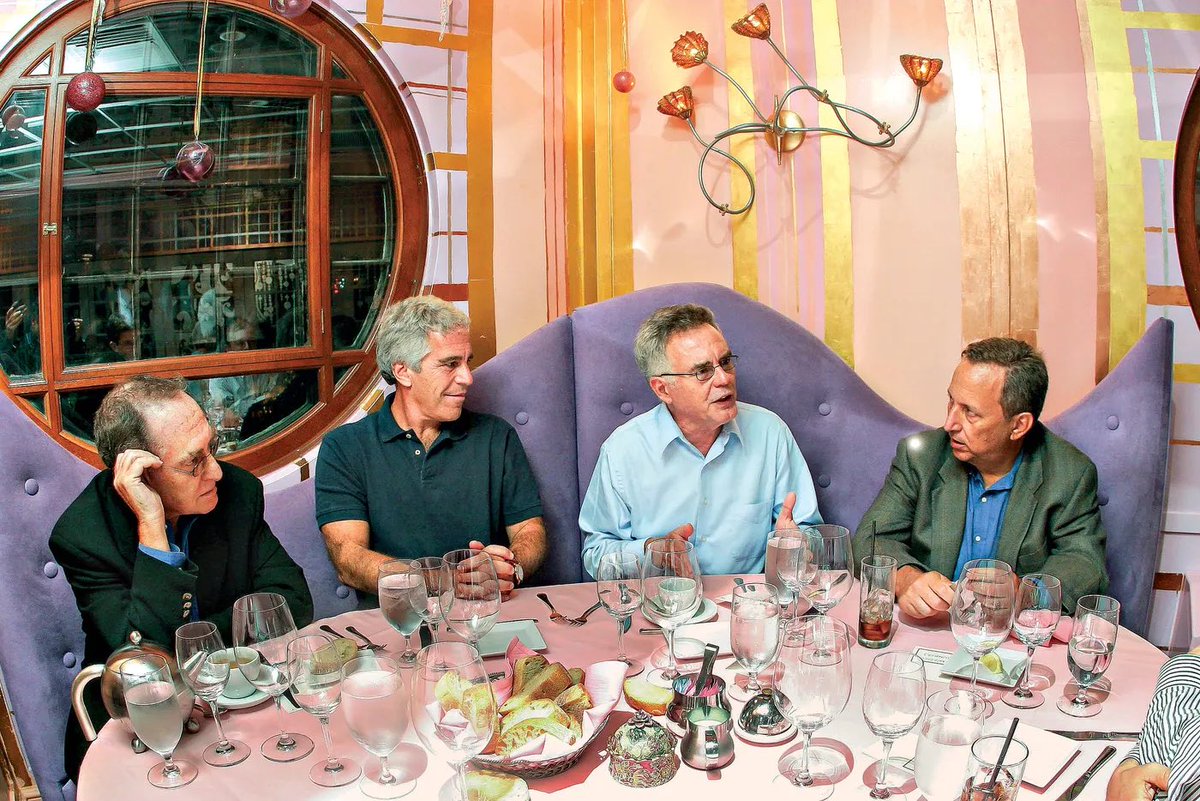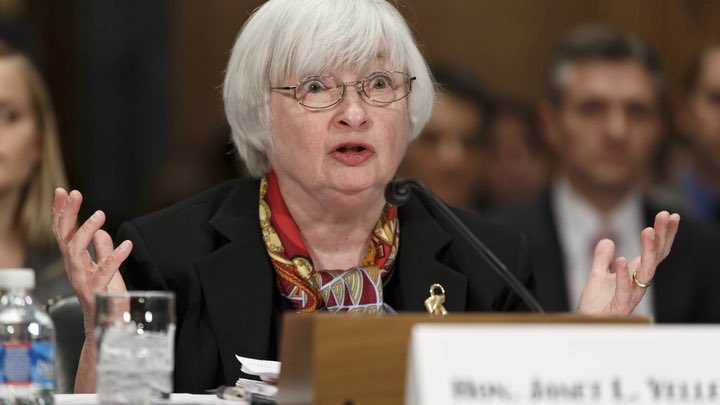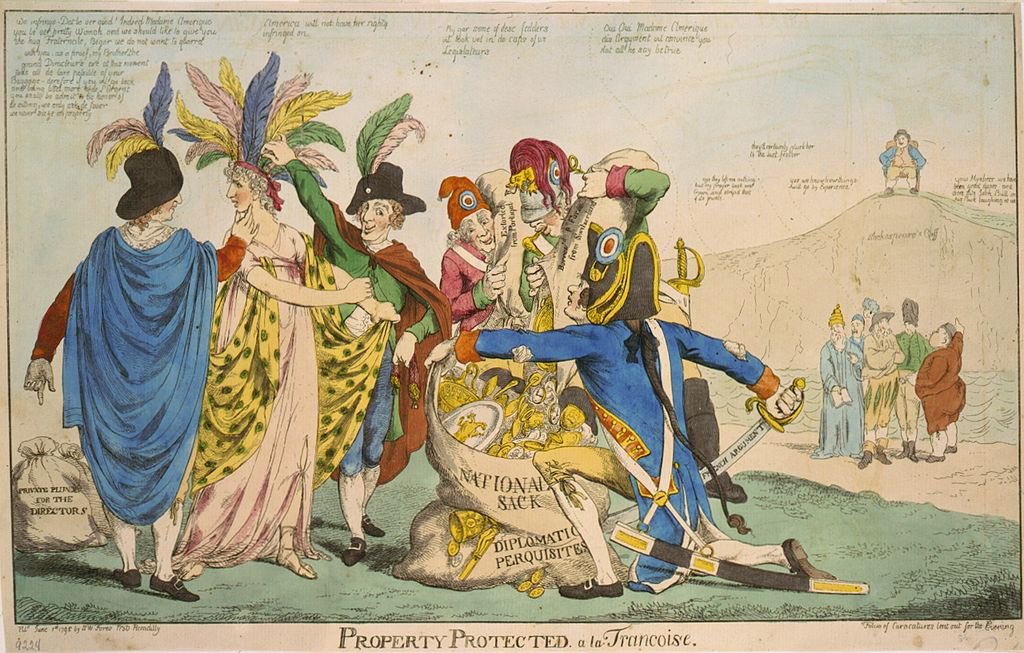
Sony Hack: The Interview, North Korea, and Everything We Know So far | Time
Sony’s move came a day after a cryptic message appeared online threatening attacks against theaters that played the film, and several weeks after hackers first breached Sony’s time.com/3639275/the-in…
Sony’s move came a day after a cryptic message appeared online threatening attacks against theaters that played the film, and several weeks after hackers first breached Sony’s time.com/3639275/the-in…
system and posted troves of private emails and other data online. And the attack has already affected other companies: Secret acquisitions by photo-sharing app Snapchat, for instance, have been made public thanks to leaked emails from Sony Pictures CEO Michael Lynton, who sits on 

Snapchat’s board. On Thursday, the government announced a new daily tax for calls made via voice-over-internet-protocol (Voip), which is used by apps including WhatsApp, Facebook Messenger and Apple's FaceTime. The government backtracked hours later, but the protests continued.
"We are not here over the WhatsApp, we are here over everything: over fuel, food, bread, over everything," said Abdullah, a protester in Beirut.
The Amazon billionaire Jeff Bezos had his mobile phone “hacked” in 2018 after receiving a WhatsApp message that had apparently been



The Amazon billionaire Jeff Bezos had his mobile phone “hacked” in 2018 after receiving a WhatsApp message that had apparently been




sent from the personal account of the crown prince of Saudi Arabia, sources have told the Guardian.
The encrypted message from the number used by Mohammed bin Salman is believed to have included a malicious file that infiltrated the phone of the world’s richest man, according



The encrypted message from the number used by Mohammed bin Salman is believed to have included a malicious file that infiltrated the phone of the world’s richest man, according




to the results of a digital forensic analysis.
This analysis found it “highly probable” that the intrusion into the phone was triggered by an infected video file sent from the account of the Saudi heir to Bezos, the owner of the Washington Post.



This analysis found it “highly probable” that the intrusion into the phone was triggered by an infected video file sent from the account of the Saudi heir to Bezos, the owner of the Washington Post.




Cartwright, 67, was vice chairman of the Joint Chiefs of Staff from 2007 until 2011, and was considered a key close adviser to President Barack Obama. A former fighter pilot, the Marine general was known for his expertise in the more highly technical areas of cyberwarfare
and America's nuclear enterprise. The New York Times reported in 2012 that Cartwright was a crucial player in the cyber operation called Olympic Games, started under President George W. Bush.
The Times had said that Obama ordered the cyberattacks sped up, and in 2010 an attack



The Times had said that Obama ordered the cyberattacks sped up, and in 2010 an attack




using a computer virus called Stuxnet temporarily disabled 1,000 centrifuges that the Iranians were using to enrich uranium.
CrowdStrike Holdings, Inc. is an American cybersecurity technology company based in Sunnyvale, California. It provides cloud workload[4] and endpoint security, threat intelligence, and cyberattack response services.[5] The company has been involved in investigations of several
high-profile cyberattacks, including the 2014 Sony Pictures hack,[6] the 2015–16 cyber attacks on the Democratic National Committee (DNC), and the 2016 email leak involving the DNC.
CrowdStrike was co-founded by George Kurtz (CEO),[8] Dmitri Alperovitch (former CTO),[9] and Gregg Marston (CFO, retired) in 2011.[10][11] In 2012, Shawn Henry, a former Federal Bureau of Investigation (FBI) official, was hired to lead the subsidiary CrowdStrike Services, Inc.[
12], which focused on proactive and incident response services.[13] In June 2013, the company launched its first product, CrowdStrike Falcon, which provided endpoint protection, threat intelligence and attribution. 







In May 2014, CrowdStrike's reports assisted the United States Department of Justice in charging five Chinese military hackers for economic cyber espionage against United States corporations.[16] CrowdStrike also uncovered the activities of Energetic Bear, a group connected to
the Russian Federation that conducted intelligence operations against global targets, primarily in the energy sector.[17]
After the Sony Pictures hack, CrowdStrike uncovered evidence implicating the government of North Korea and demonstrated how the attack was carried out.[18]



After the Sony Pictures hack, CrowdStrike uncovered evidence implicating the government of North Korea and demonstrated how the attack was carried out.[18]




In 2014, CrowdStrike played a major role in identifying members of Putter Panda, the state-sponsored Chinese group of hackers also known as PLA Unit 61486. In May 2015, the company released information about VENOM, a critical flaw in an open-source hypervisor called Quick 







Emulator (QEMU),[21] that allowed attackers to access sensitive personal information.[22] In October 2015, CrowdStrike announced that it had identified Chinese hackers attacking technology and pharmaceutical companies around the time that US President Barack Obama and China's 







Paramount leader Xi Jinping publicly agreed not to conduct economic espionage against each other. The alleged hacking would have been in violation of that agreement. CrowdStrike helped investigate the Democratic National Committee cyber attacks and discovered their connection to
Russian intelligence services. On March 20, 2017, James Comey testified before congress stating, "CrowdStrike, Mandiant, and ThreatConnect review[ed] the evidence of the hack and conclude[d] with high certainty that it was the work of APT 28 and APT 29 who are known to
Russian intelligence services."In December 2016, CrowdStrike released a report stating that Russian government-affiliated group Fancy Bear had hacked a Ukrainian artillery app.[45] They concluded that Russia had used the hack to cause large losses to Ukrainian artillery units.
The app (called ArtOS) is installed on tablet PCs and used for fire-control.[46] CrowdStrike also found a hacked variation of POPR-D30 being distributed on Ukrainian military forums that utilized an X-Agent implant.[47]
The International Institute for Strategic Studies rejected
The International Institute for Strategic Studies rejected
CrowdStrike's assessment that claimed hacking caused losses to Ukrainian artillery units, saying that their data on Ukrainian D30 howitzer losses was misused in CrowdStrike's report.
In the Trump–Ukraine scandal, a transcript of a conversation between Donald Trump, the president of the United States, and Volodymyr Zelensky, the president of Ukraine, had Trump asking Zelensky to look into a conspiracy theory propagated by the Russian security services 







regarding CrowdStrike. In July 2015, Google invested in the company's Series C funding round, which was followed by Series D[35] and Series E,[36] raising a total of $480 million as of May 2019.[37][38] In 2017, the company reached a valuation of more than $1 billion with an 







estimated annual revenue of $100 million.[39] In June 2018, the company said it was valued at more than $3 billion.[36] Investors include Telstra, March Capital Partners, Rackspace, Accel Partners and Warburg Pincus.
In 1939, Eric Warburg of the Warburg banking family founded a company under the name E.M. Warburg & Co. Its first address was 52 William Street, New York, the Kuhn Loeb building. Timothy Franz Geithner (/ˈɡaɪtnər/; born August 18, 1961) is a former American central banker who 

served as the 75th United States Secretary of the Treasury under President Barack Obama, from 2009 to 2013. He was the President of the Federal Reserve Bank of New York from 2003 to 2009, following service in the Clinton administration. Since March 2014, he has served as 







president and managing director of Warburg Pincus, a private equity firm headquartered in New York City. As President of the New York Fed and Secretary of the Treasury, Geithner had a key role in government efforts to recover from the financial crisis of 2007–08 and the Great 







Recession. At the New York Fed, Geithner helped manage crises involving Bear Stearns, Lehman Brothers, and the American International Group; as Treasury Secretary, he oversaw allocation of $350 billion under the Troubled Asset Relief Program, enacted during the previous 







administration in response to the subprime mortgage crisis. Geithner also managed the administration's efforts to restructure regulation of the nation's financial system;[3] attempts to spur recovery of the mortgage market and the automobile industry; demands for protectionism; 







tax reform; and negotiations with foreign governments on global finance issues. Geithner was born in Manhattan, New York, to Peter Franz Geithner and Deborah Moore.[6] His father, a German American, was the director of the Ford Foundation's Asia program in New York during the 







1990s, after working for the United States Agency for International Development in Zambia and Zimbabwe. Geithner's mother, a Mayflower descendant, belongs to a New England family.[9] Her father, Charles Frederick Moore, Jr., served as vice-president of public relations for the 







Ford Motor Company from 1952 to 1964, and advised President Dwight D. Eisenhower, as well as Nelson Rockefeller and George W. Romney, on their respective presidential campaigns. His uncle, Jonathan Moore, served in the departments of Defense, Justice and State, as well as in the
United Nations. Geithner worked for Kissinger Associates in Washington, D.C., from 1985 to 1988, when he joined the International Affairs division of the U.S. Treasury Department.[19] He served as an attaché at the Embassy of the United States in Tokyo, then as deputy assistant 







secretary for international monetary and financial policy (1995–1996), senior deputy assistant secretary for international affairs (1996–1997), and assistant secretary for international affairs (1997–1998).[12] He was Under Secretary of the Treasury for International Affairs 







(1998–2001) under Secretaries Robert Rubin and Lawrence Summers,[12] who are widely considered to have been his mentors.
In mid-March 2008, together with then-Treasury Secretary Henry Paulson, Geithner arranged the rescue and fire sale of Bear Stearns, which was at risk of



In mid-March 2008, together with then-Treasury Secretary Henry Paulson, Geithner arranged the rescue and fire sale of Bear Stearns, which was at risk of




bankruptcy, to JPMorgan Chase for $2 per share (later raised to $10 per share). The New York Fed stored these assets in the Maiden Lane limited liability company and awarded no-bid contracts to the Wall Street asset manager BlackRock for management of the assets, with the intent 







of ridding itself of the assets within 10 years. During the federal government's bailout of AIG in September 2008, the holding companies Maiden Lane II LLC and Maiden Lane III LLC were created, and they were funded with loans of $19.5 billion and $24.3 billion from 







Federal reserve. The U.S. Federal Government's total investment in the AIG bailout, including both Maiden Lane II and III and actions by the U.S. Treasury, was $182 billion. AIG, through this fund also funneled significant bailout money to U.S. banks that had already been bailed 







out under Troubled Asset Relief Program. As AIG counterparties, Goldman Sachs got $12.9 billion, Bank of America got $5.2 billion, and Citigroup got $2.3 billion all at 100% on the dollar. Maiden Lane was organized as Delaware Limited Liability Company on April 29, 2008,[8] and 







registered to do business as a foreign limited liability company in the state of New York on June 26, 2008.[9] The registered agent of Maiden Lane LLC is the CT Corporation. CT, or the Corporation Trust Company, is a wholly owned subsidiary of Wolters Kluwer, a multi-national
information services company based in the Netherlands with operations in over 35 countries. The company now known as CT Corporation has been in the registered agent business since its founding in New Jersey in 1892[3] with only 44 employees. The original charter of the company
was handwritten and stated that its purpose was "to carry on a general agency business, especially the acting as agent of and trustee for corporations".
In 1895, what was then the Corporation Trust Company began assisting lawyers with the details of incorporating and qualifying
In 1895, what was then the Corporation Trust Company began assisting lawyers with the details of incorporating and qualifying
corporations in all states and territories. They opened their first office in New York City in 1899. In 1955, they exceeded 75,000 units of statutory representation (including domestic and foreign units). CT Corporation's registered-agent service in Delaware is at the
Corporation Trust Center at 1209 North Orange Street which is famous for being the home of thousands of companies due to Delaware's incorporation laws. Notable companies represented by CT at this location include Google, American Airlines, Apple Inc., General Motors,
The Coca-Cola Company, Walmart, Yum! Brands, Verizon, and about 430 of Deutsche Bank's more than 2,000 subsidiary companies and special purpose companies.[3][4] Both former President of the United States Donald Trump, and his main opponent in the 2016 United States presidential
election, Hillary Clinton, have registered companies at the center.
The Corporation Trust Center, 1209 North Orange Street, is a single-story building located in the Brandywine neighborhood of Wilmington, Delaware, USA, operated by CT Corporation, a subsidiary of Dutch
The Corporation Trust Center, 1209 North Orange Street, is a single-story building located in the Brandywine neighborhood of Wilmington, Delaware, USA, operated by CT Corporation, a subsidiary of Dutch
multinational services firm Wolters Kluwer. This is CT Corporation's location in the state of Delaware for providing "registered agent services."[1] In 2012 it was the registered agent address of at least 285,000 separate businesses. Many companies are incorporated in Delaware 

for its business-friendly General Corporation Law and it was estimated in 2012 that 9.5 billion dollars of potential taxes had not been levied over the past decade, due to an arrangement known as the "Delaware loophole."[2] Companies formed in Delaware are required to have an
address in the state at which process may be served. Therefore, Delaware entities with no physical office in the state must have a registered agent with a Delaware address. Jan-Berend Wolters founded the Schoolbook publishing house in Groningen, Netherlands, in 1836.
Early in her career, McKinstry held management positions with Booz & Company (formerly Booz Allen Hamilton, currently known as Strategy&), an international management consulting firm, where she focused on assignments in the media and technology industries.[citation needed]
In
In

1999, McKinstry worked as CEO of SCP Communications, a medical information company, before rejoining Wolters Kluwer to head its North American operations. Jan-Berend Wolters founded the Schoolbook publishing house in Groningen, Netherlands, in 1836.[7] In 1858, the Noordhoff
publishing house was founded alongside the Schoolbook publishing house.[7] The two publishing houses merged in 1968. Wolters-Noordhoff merged with Information and Communications Union (ICU) in 1972 and took the name ICU. ICU changed its name to Wolters-Samsom in 1983. The
company began serving foreign law firms and multinational companies in China in 1985.[9] In 1987, Elsevier, the largest publishing house in the Netherlands, announced its intentions to buy up Kluwer's stock.[7] Kluwer merged with Wolters-Samsom to fend off Elsevier's take-over
bid and formed Wolters Kluwer.[10] The merger made Wolters Kluwer the second largest publishing house in the Netherlands. The site of the building was originally owned by John Neely Bryan.[1] During the 1880s, Maxime Guillot operated a wagon shop on the property. In 1894, the 

Rock Island Plow Company bought the land, and four years later constructed a five-story building for its Texas division, the Southern Rock Island Plow Company. Bryan was very important to early Dallas — he served as the postmaster, a store owner, a ferry operator (he operated a
ferry where Commerce Street crosses the Trinity River today), and his home served as the courthouse.
When Dallas became the county seat, Bryan donated the land for the courthouse. In 1843, he married Margaret Beeman, a daughter of the Beeman family who settled in Dallas from
When Dallas became the county seat, Bryan donated the land for the courthouse. In 1843, he married Margaret Beeman, a daughter of the Beeman family who settled in Dallas from
Bird's Fort. David Harold "Dry Hole" Byrd (24 April 1900 – 14 September 1986) was a noted Texan producer of petroleum, and a co-founder of the Civil Air Patrol. Byrd's cousin, polar explorer Richard E. Byrd, named Antarctica's Harold Byrd Mountains for him. After graduation,
Byrd worked for H.E. Humphreys, and as a geological oil scout for several oil companies including Old Dominion Oil Company of San Antonio before becoming, in 1925, an independent consultant and driller in Brownwood, Texas. Here he acquired his "dry hole" nickname by drilling 56
wells that produced no oil until on 28 May 1928 he drilled two productive wells on the same day, one of them, the Byrd-Daniels Oil Field producing 1000 barrels a day at $3 a barrel.[1]
In 1931 Byrd founded Byrd-Frost Incorporated with Jack Frost, which operated 492 East Texas
In 1931 Byrd founded Byrd-Frost Incorporated with Jack Frost, which operated 492 East Texas
wells that produced an average of 4,000 barrels a day. In the 1930s he purchased the Texas School Book Depository in Dallas, scene of the 1963 assassination of John F. Kennedy. During this period Byrd became very interested in aviation. In 1938 he was named to the Texas Civil
Aeronautics Commission by Texas Governor James V. Allred, and was involved in founding the Civil Air Patrol (CAP) in September 1941. During World War II Byrd commanded a CAP anti-submarine base at Beaumont, Texas.[1] After the war Byrd helped incorporate CAP and have it
designated as an Auxiliary of the Air Force, helped initiate the International Air Cadet Exchange, and established or supported cadet scholarships. For his work with the CAP Byrd was awarded the US Air Force's Air Force Scroll of Appreciation on 24 May 1963.[
In 1944 Byrd founded Byrd Oil Corporation, which was later sold to Mobil Oil. That year he also founded B.H. Drilling Corporation. Byrd's Three States Natural Gas Company was sold to Delhi-Taylor Oil Corporation in 1961.
In 1952 Byrd established the Three States Natural Gas
In 1952 Byrd established the Three States Natural Gas
Company, which he later sold to Delhi-Taylor, using the money to invest in aircraft production, co-founding Temco Aircraft, which in 1961 merged with friend James Ling's electronics company and aircraft manufacturer Chance Vought Corporation to form Ling-Temco-Vought (LTV).
D.H. "Dryhole" Byrd was very close to the insanely corrupt Lyndon Johnson. Byrd was also very close to Air Force General Curtis LeMay who hated JFK with a white hot passion - you should read LeMay's oral history at the LBJ Library. 

After the war, he was assigned to command USAF Europe and coordinated the Berlin airlift. He served as commander of the Strategic Air Command (SAC) from 1948 to 1957, where he presided over the transition to an all-jet aircraft force that focused on the deployment of nuclear 

weapons. Throughout his career, LeMay was widely and fondly known among his troops as "Old Iron Pants", and the "Big Cigar". For this first attack, LeMay ordered the defensive guns removed from 325 B-29s, loaded each plane with Model M-47 incendiary clusters, magnesium bombs,
white phosphorus bombs, and napalm, and ordered the bombers to fly in streams at 5,000 to 9,000 feet (1,500 to 2,700 m) over Tokyo.[7][8][12] LeMay described Operation Meetinghouse by saying "the US had finally stopped swatting at flies and gone after the manure pile".[13]
The
The
first pathfinder airplanes arrived over Tokyo just after midnight on March 10 and marked the target area with a flaming "X". In a three-hour period, the main bombing force dropped 1,665 tons of incendiary bombs, killing 100,000 civilians, destroying 250,000 buildings, and
incinerating 16 square miles (41 km2) of the city. In 1948, he returned to the U.S. to head the Strategic Air Command (SAC) at Offutt Air Force Base, replacing Gen George Kenney. When LeMay took over command of SAC, it consisted of little more than a few understaffed B-29 







bombardment groups left over from World War II. For the 1968 presidential election, LeMay originally supported former Republican Vice President Richard Nixon; he turned down two requests by former Alabama Governor George Wallace to join his newly formed American Independent
Party, that year, on the grounds that a third-party candidacy might hurt Nixon's chances at the polls. In 1964, LeMay became one of the founding board members of Executive Jet Aviation (EJA) (now called NetJets), along with fellow USAF generals Paul Tibbets and Olbert Lassiter,
Washington lawyer and former military pilot Bruce Sundlun, and entertainers James Stewart and Arthur Godfrey. Judo's resurgence after the war was due primarily to two individuals, Kyuzo Mifune and Curtis LeMay. The pre-war death of Jigorō Kanō ("the father of judo"), wartime
demands on the Japanese, their surrender, postwar occupation, and the martial-arts ban[67] all contributed to a time of uncertainty for judo. As assistant to General Douglas MacArthur during the occupation of Japan, LeMay made practicing judo a routine part of Air Force tours of
duty in Japan. In 1984, Executive Jet Aviation was purchased by mathematician and former Goldman Sachs executive Richard Santulli who owned a business that leased helicopters to service providers of offshore oil operations. In 1998, Berkshire Hathaway acquired EJA and NetJets Inc
from Richard Santulli for US$725 million, half of which was paid in stock.[21][22] NetJets soon expanded to Europe and then Russia, and by 2006, it was the largest operator of business jets in Europe.
In early August 2009, Santulli resigned as CEO and was replaced by David
In early August 2009, Santulli resigned as CEO and was replaced by David
Sokol. Shortly afterward, NetJets moved its corporate headquarters from New Jersey back to its original home in Columbus, Ohio. Prior to his abrupt resignation in March 2011, David Sokol was widely regarded as the likely successor to Warren Buffett.[6] Often referred to as 

Buffett's Mr. Fix-It,[7] Sokol was tasked with rescuing underperforming Berkshire divisions Johns Manville and NetJets. Under Sokol's leadership Johns Manville was brought back on track and NetJets swung from a $157 million loss in 2009 to a $207 million gain in 2010.
Sokol was also integral in the selection of acquisition targets at Berkshire. In 2008, Sokol flew to China to research car manufacturer BYD, which resulted in Berkshire acquiring a $230 million stake. This position was worth over $1.5 billion in 2010. Later in 2008, Sokol
engineered the acquisition of Constellation for $4.7 billion, sparing the energy company from bankruptcy. Sokol purchased 96,060 shares of Lubrizol at a limit price of $104 per share between January 5 and 7, 2011. He presented the idea of Berkshire's acquiring Lubrizol to Buffett
on January 14 or 15, 2011, and again after a January 25 meeting with Lubrizol's CEO. Berkshire Hathaway's board voted to acquire Lubrizol at $135 per share on March 13, 2011.[11]
On March 28, 2011, Sokol tendered his resignation from Berkshire Hathaway. In his press release
On March 28, 2011, Sokol tendered his resignation from Berkshire Hathaway. In his press release
detailing the resignation, Mr. Buffett detailed trading activity surrounding the Lubrizol acquisition, emphasizing that he did not believe anything unlawful transpired. Berkshire Hathaway announced on March 14, 2011 that it would acquire Lubrizol for US$9.7 billion in cash.[14][
15] This happened just weeks after a top Berkshire executive, David Sokol, made a major bet on the stock price with his own money.[16] That deal closed in September 2011.[17] In December 2014, Lubrizol bought Weatherford International's engineered chemistry and drilling fluids
businesses in a deal valued at US$825 million.[18] This resulted in creation of the company's third business segment, Lubrizol Oilfield Solutions.[The company announced that it eliminated Lubrizol Oilfield Operations business segment in February 2017.[19]
Lubrizol's expansion in
Lubrizol's expansion in
other areas of business in the 2000s included a 10-year phased investment plan launched in 2010.[20] The plan, which sought to increase global capacity in additives, featured a plant in Zhuhai, China, among others. In April 2020, the company asked for Section 301 tariff relief
for glutaraldehyde, which had 25% tariffs due to Trump's 2018 China–United States trade war. The company's relief application said it could be helpful as a disinfectant against COVID-19; the application made no mention of its use for fracking or the company's primary market being
the oil industry. Another application for treatment of proteins with glutaraldehyde is the inactivation of bacterial toxins to generate toxoid vaccines, e.g., the pertussis (whooping cough) toxoid component in the Boostrix Tdap vaccine produced by GlaxoSmithKline.
Burroughs Wellcome & Company was founded in 1880, in London by the American pharmacists Henry Wellcome and Silas Burroughs. The Wellcome Tropical Research Laboratories opened in 1902. In the 1920s Burroughs Wellcome established research and manufacturing facilities in Tuckahoe,
New York, which served as the US headquarters until the company moved to Research Triangle Park in North Carolina in 1971. The Research Triangle Foundation operates several subsidiaries within the park. These include: the Frontier RTP startup campus, The Lab, and The Archie K.
Davis Conference Center. The Lab is a full-service lab and office space that houses multiple research and development companies. The growth in investment in NIH research, whose Environmental Health arm, NIEHS, operates in RTP, has exceeded both inflation and the rate of growth of
the Federal budget for 59 years—an almost 9% annual compounded rate of increase—one that all our retirement portfolios should emulate.
As the NIH spending growth suggests, in 1959, research in the basic sciences was skewed more toward private industry than that of public
As the NIH spending growth suggests, in 1959, research in the basic sciences was skewed more toward private industry than that of public
research institutions. The story of Bell Labs as described by Douglas Coupland in “Kitten Clone: Inside Alcatel-Lucent” is a bellwether for how corporations have transitioned investments in new technologies from self-invented to a collaborative approach among major research
institutions and start-up companies.
April 1977 – NIEHS gets a permanent facility
Construction of the permanent facility began on
509 acres in Research Triangle Park, North Carolina, and was completed in November 1982. Construction on an addition, housing another 245 labs and

April 1977 – NIEHS gets a permanent facility
Construction of the permanent facility began on
509 acres in Research Triangle Park, North Carolina, and was completed in November 1982. Construction on an addition, housing another 245 labs and


magnetic resonance imaging facility, began in 1992, and was dedicated October 29, 1996, as pa
niehs.nih.gov/about/assets/f…
niehs.nih.gov/about/assets/f…
The NIEHS is one of 27 institutes and centers of the National Institutes of Health (NIH), which is a component of the Department of Health and Human Services (DHHS). NIEHS is located on 375 acres (1.52 km2) in Research Triangle Park (RTP), North Carolina. Its current Director is
Dr. Linda Birnbaum,, who is also concurrently the Director of the National Toxicology Program. The Deputy Director is Dr. Richard Woychik. The Director of the NIEHS reports to the Director of the NIH, of which the NIEHS is a member agency. Currently, Dr. Francis S. Collins
directs the NIH; he in turn reports to the Secretary of the DHHS, Alex Azar.
• • •
Missing some Tweet in this thread? You can try to
force a refresh







